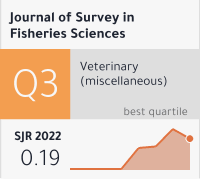Fipronil: mechanisms of action on various organisms and future relevance for animal models studies
DOI:
https://doi.org/10.17762/sfs.v5i1.162Keywords:
Insecticide, fipronil, GABA, ecological risk, neurotoxicity, vertebrates, humans, autism spectrum disorderAbstract
Because insects had developed resistance to several insecticides, today, neonicotinoids and fiproles are used to combat pests. The difference between this two classes of insecticides is that fipronil acts by inhibiting the receptors of nervous cells, while neonicotinoids perturbs the neuronal transmission. The suitable properties of fipronil make that its use to be more obvious on the pesticide market. Even if it is known that this insecticide has a direct target, there are cases when its effects are negative on other organisms. In the last period, it appeared a lot of reports describing the consequences of his use not only regarding insects. Vertebrates and even humans are exposed to its bad influence. The present paper contain a description of fipronil discovery, mechanism of action and some of the main effects which occur after administrating it, as well as, relevance for animal models studies.









